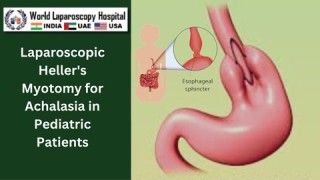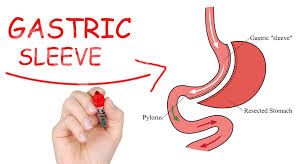Laparoscopic Myomectomy for Intramural Big Fibroid Uterus
Add to
Share
200 views
Report
1 month ago
Description
Laparoscopic myomectomy is a minimally invasive surgical procedure designed to remove uterine fibroids while preserving the uterus. It has become the preferred approach for women with symptomatic fibroids who wish to retain fertility or avoid major open surgery. Among fibroids, intramural fibroids—those embedded within the muscular wall of the uterus—can present unique challenges, especially when they are large. What is an Intramural Fibroid? Intramural fibroids are the most common type of uterine fibroid. They grow within the myometrium (uterine muscle layer) and can cause: Heavy or prolonged menstrual bleeding Pelvic pain or pressure Urinary frequency or constipation due to mass effect Infertility or recurrent pregnancy loss When these fibroids become large, they may significantly distort the uterine cavity and affect quality of life. Advantages of Laparoscopic Myomectomy Laparoscopic myomectomy offers several benefits over traditional open surgery (laparotomy): Minimally invasive: Only small keyhole incisions are needed. Reduced blood loss: Advanced techniques allow precise dissection and hemostasis. Faster recovery: Most patients can resume normal activities within 1–2 weeks. Fertility preservation: The uterus remains intact, allowing future pregnancies. Lower postoperative pain and complications: Reduced risk of adhesions and wound infections. Surgical Technique for Large Intramural Fibroids Preoperative Planning: Detailed imaging with ultrasound or MRI to assess size, location, and vascularity. Preoperative medications like GnRH analogs may be used to reduce fibroid size and vascularity. Port Placement: Several laparoscopic ports are placed strategically for optimal visualization and instrument access. Larger fibroids may require modification of port sites or the use of advanced instruments. Fibroid Enucleation: The myometrium overlying the fibroid is carefully incised. The fibroid is dissected out using laparoscopic instruments, taking care to minimize trauma to surrounding uterine tissue. Uterine Reconstruction: The uterine defect is meticulously sutured to restore uterine integrity, reduce bleeding, and promote healing. Specimen Removal: Large fibroids are often removed via morcellation or contained extraction techniques to maintain safety and avoid tissue dissemination. Challenges and Considerations Large size: Fibroids >10 cm may be technically challenging but can still be removed laparoscopically by experienced surgeons. Bleeding: Proper preoperative planning and intraoperative techniques (e.g., vasoconstrictive agents, temporary uterine artery occlusion) are crucial. Recurrence risk: Intramural fibroids have a potential for recurrence; patients should be monitored periodically. Recovery and Follow-Up Most women can return to routine activities within 1–2 weeks. Pain is usually mild and managed with oral analgesics. Regular follow-up with ultrasound or MRI is recommended to monitor uterine healing and detect any recurrence. Conclusion Laparoscopic myomectomy for large intramural fibroids offers a safe, effective, and fertility-preserving solution for women suffering from symptomatic fibroids. With advances in minimally invasive surgery, even large fibroids can be managed successfully, providing patients with shorter hospital stays, quicker recovery, and excellent cosmetic outcomes.
Similar Videos






